Several Tips on How to Select
a Wireless Radio Remote Control
for your Overhead Cranes & Hoists.

This is a complete guide to selecting the best
Wireless Radio Remote control for your crane in 2020.
So if you want to make sure that your knowledge of the current radio systems is up to speed, you should get a lot of value from today’s guide.
In this all-new guide you’ll learn all about:
- Types of RF technology used in Modern Remote controls.
- Safety of Wireless Radio Remote Control System.
- Environmental Factors for selecting a Remote control for your EOT crane.
- Ergonomics of a handheld wireless remote control system of a crane.
- Integration of a Radio remote control with your Crane control panel.
- Service & Support Team.
- Radio Remote control Price.
Selection of Radio remote based on Technology
things to consider : RF Technology,frequency Hopping algorithm, Data Security,Relays,Feedback.
1) Radio Frequency circuit used
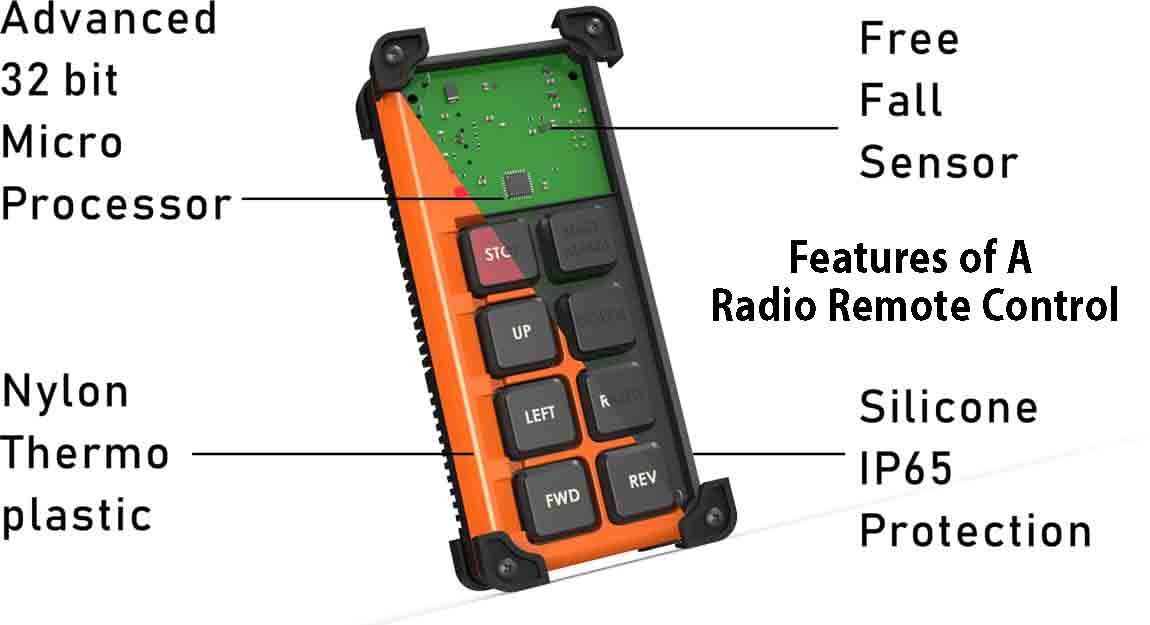
Almost 30 years ago ,Analog RF circuits relied on tuning frequency crystals to tune
the transmitter and receiver at the same frequency for a successful communication.
Even though they are used by some
manufacturers today ,without notice , these frequency crystals randomly change their center frequency depending on the
temperature and humidity of the environment leading to loss of communication.
These
RF circuits were bulky and faced lot
of issues. With advancement of RF technology , RF integrated circuits are available which eliminates the need of analog
filters by transferrings tasks such as signal filtering, channel selection and processing to the digital signal processor
Integrated Circuit.
Basically, due to advancement in technology and Integrated chip design and manufacturing , cost has
gone down and reliability has gone up.
With new ICs you are not at the mercy of a frequency crystal and different data
modulation techniques such as Phase shift keying is possible at a lower price point.
2)Automatic Frequency Hopping & Channels
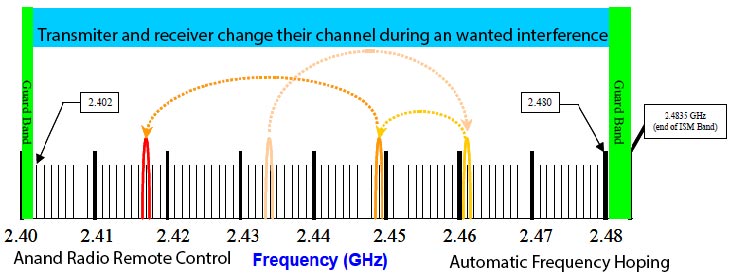
Modern radio remote controls can change the frequency of operation at will.
If there is an interference at a particular channel, the system can automatically shift its frequency to a noise free channel
without the operator knowing anything about it.
This is called automatic frequency hopping and it's very important to know
if your radio remote control system has a lot of channels to hop between.
More channels and more bandwidth means better
resistance to narrow band noise.
3)Direct Sequence Spread Spectrum
Direct Sequence Spread spectrum is another noise interference technique which spreads
the signal over the selected frequency of operation.
A DSSS Signal appears as noise to eavesdroppers and is impossible to
detect without the correct spreading sequence.A DSSS based remote control greatly enhances the security as well as immunity
to noise.
4)Security using AES Encryption
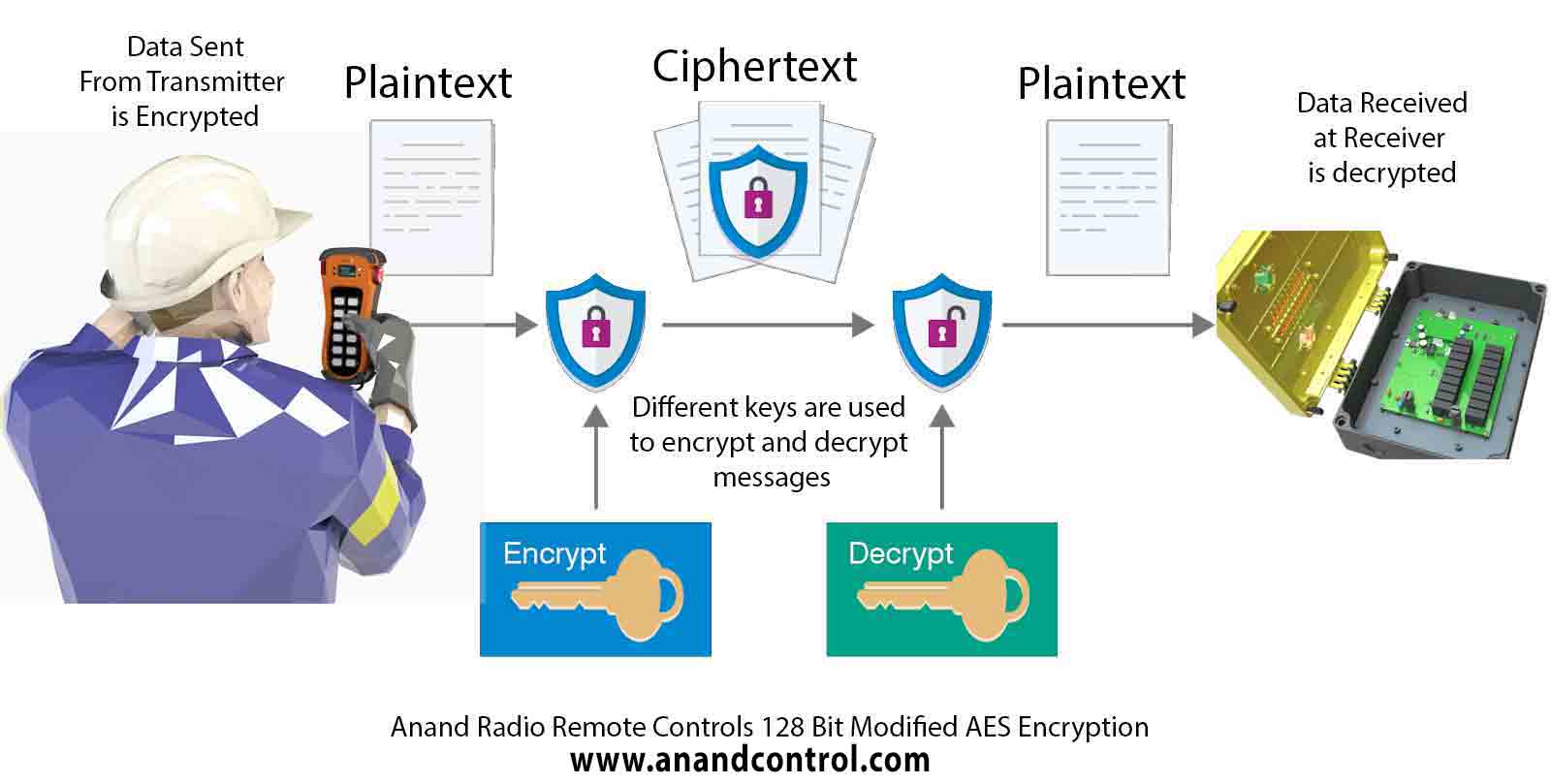
Since you do not want hackers or people with bad intentions to operate your crane ,
security plays a major role when selecting a radio remote control.
The data being sent from the transmitter can be captured
and analyzed by a hacker .This signal can then be replayed and retransmitted to the receiver , causing an unintended
operation.
Instead of plainly sending a signal as-is , the data can be encrypted with a secret key before transmission and
decrypted upon reception so that a hacker can never understand the communication between the transmitter and receiver.
Data Security has been taken up very seriously by the Anand R and D team , and it is virtually impossible to hack an Anand
Remote control due to use of a modified AES 128 bit encryption.
5)Relays
Relays are used in the receiver box to provide or cut power to a downstream contactor.
Using power relays sufficiently rated to activate a downstream Contactor or an I/O of a variable frequency drive is important.
If the relays are not properly rated with enough headroom then the relays can fail shorted.
Relay life also plays an
important factor as electromechanical relays are typically rated at 10,000 to 50,000 operations with around 50 operations per
minute.
6)Feedback
Feedback is when the receiver sends an acknowledgement back to the transmitter upon
reception of signal.
With the acknowledgement,important data can be sent back to the transmitter to be displayed on an
LCD or a LED.Data such as weight of load, crane position ,relay operation can be viewed by the operator.
Internally ,
the transmitter waits for an acknowledgement from the receiver to understand if the receiver has received the signal.
Safety of Wireless Radio System
There are 6 things to consider in Safety of wireless Radio Systems.
1)Software Safety for wireless controls of cranes.
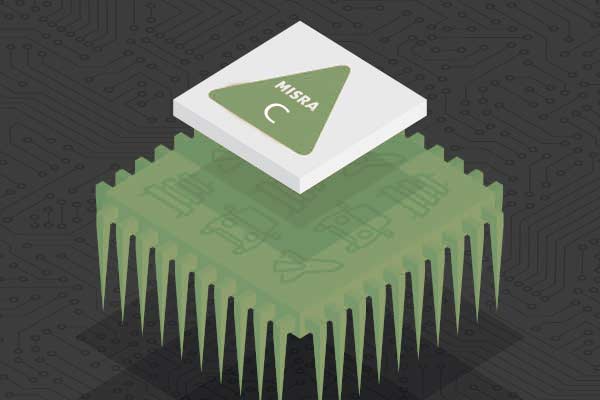
Since your remote control is a combination of software and electronics which controls a huge
machine like a crane, safety in software is critical.
Writing safety critical software is an art in itself which all of the
automobile industry has adopted vigorously.
During the early 2000’s due to unsafe software writing practise, autobilies used
to experience unintended acceleration even when the driver had not pressed the accelerator. After several deaths and lawsuits
The automobile industry came up with software development guidelines called MISRA C.
C code written according to MISRA C
standards eliminates bad coding practice and improves reliability ,safety and security of all embedded systems implementing this guideline.
Hence, The mood of the software developer on the day of code development , does not affect the quality of code being written
for a particular embedded system.
Using MISRA C development guidelines for radio remote controls is an extremely good idea and
should be followed by the industry.
All Anand Systems Engineering
software developers are trained in MISRA C and hence all
Anand radio remote controls use MISRA C.
2)Emergency condition during operation of crane.
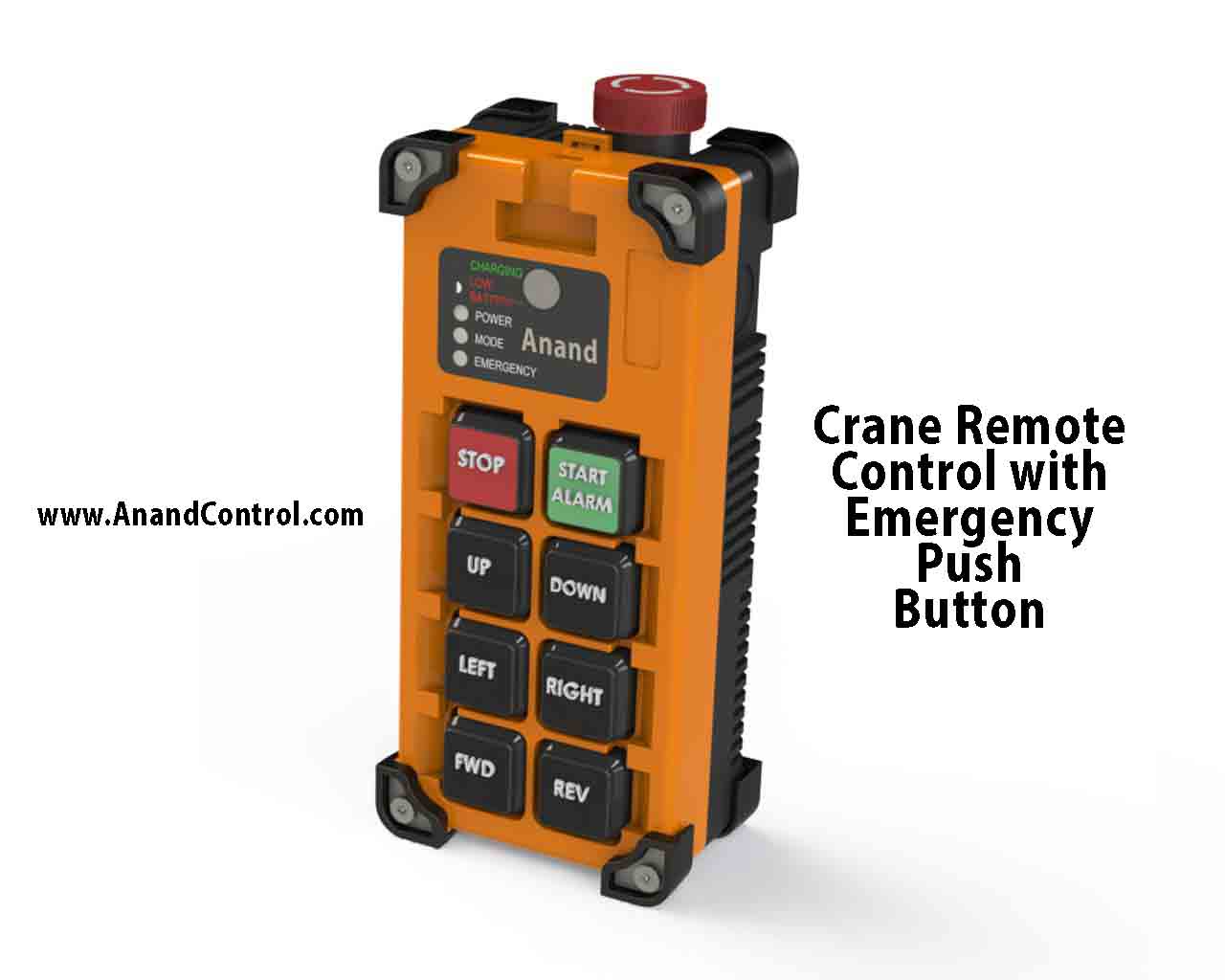
The emergency Button from the transmitter sends an emergency Signal to the receiver.
The detection of the emergency button by the receiver and the sending of this emergency signal by the transmitter should be of
the highest priority for the software and hardware.
Even if there is some fault inside the transmitter ,under any condition ,
the activation of the emergency button should send the emergency signal to the receiver to deactivate all the relays .
If the emergency button is activated , the receiver should not be able to switch on or operate any of the electromechanical
relays to prevent a safety hazard.
Anand Radio Remote controls give the highest priority to emergency signals ,even if the
transmitter is in battery saving power mode during idle condition.
3)Periodic Polling between Transmitter and Receiver.
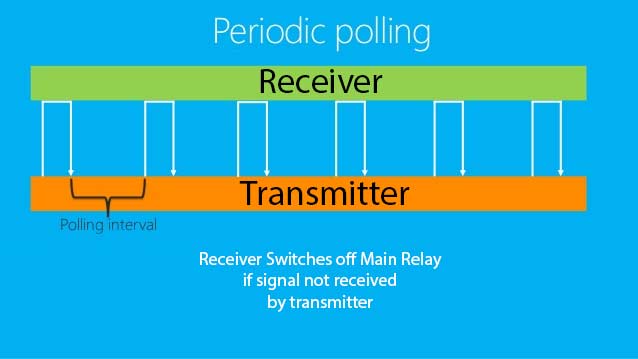
In periodic polling , Whenever the transmitter has power from a battery , it will
periodically send signals to the receiver every 1 second to let the receiver know about the presence of an active transmitter .
The receiver will receive these signals and will remain active. As soon as these periodic signals are not being received the
receiver will shutdown its main Relay and switch off the machine.
This helps in drastically improving safety by only powering
the crane when the transmitter is in range and switched on, but it has the drawback of increased power consumption of the
transmitter battery.
4)Range between Transmitter and Receiver.
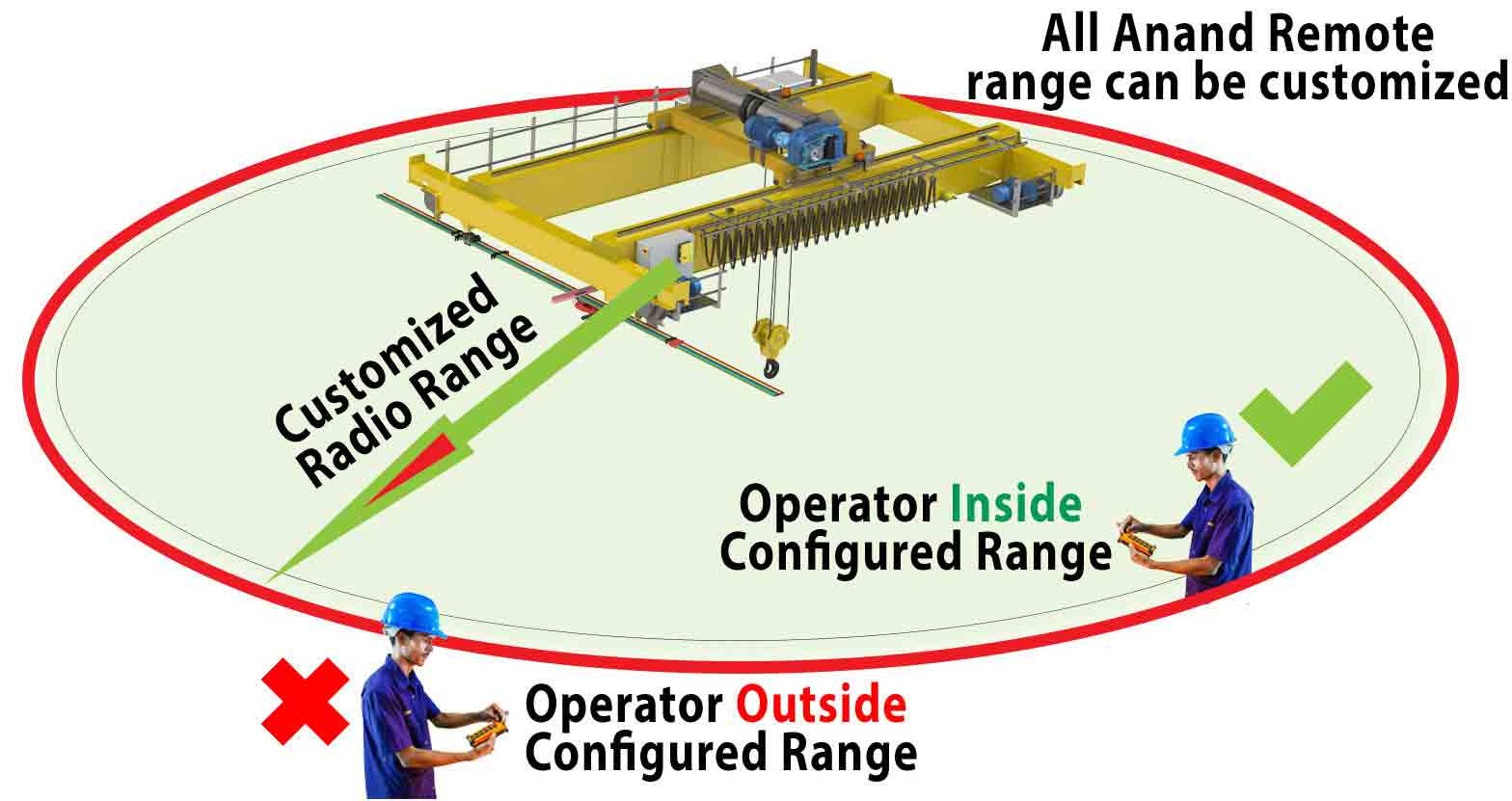
The receiver Radio Frequency circuit should be able to detect the
received signal strength indicator (RSSI) and Link Quality Indication(LQI) of the transmitter signal.
Since your remote
control should only be operated by the operator within a defined boundary working area.
If the operator has gone outside
this boundary area , the receiver should detect and take necessary action.
This prevents an operator to activate the
crane from a far away distance due to negligence or wrong operating practice.Your remote control should have the option of pre
setting this Boundary range.
5)Free Fall of Handheld transmitter.
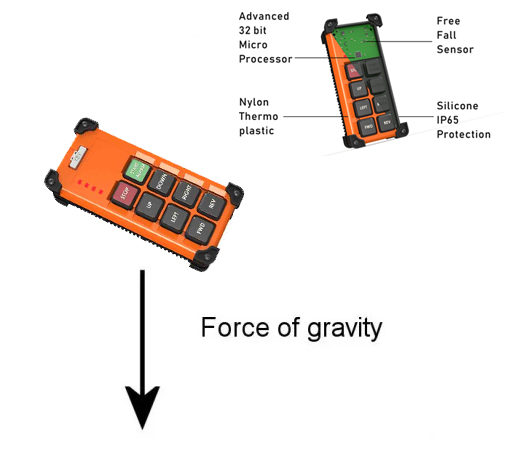
A Free fall sensor will help when an operator falls or the operator drops the hand held transmitter during operation.
The free fall sensor is an extremely tiny component and it will detect the acceleration due to gravity in the downward
direction .
If an operator drops the transmitter , any of the buttons can be pressed upon impact , resulting in unintended
operation.
During free fall , the sensor will detect the absence of force in the upward direction given by the operator
during normal operation and will disable power to the push buttons before impact.
6)External Watchdog Integrated Chip.
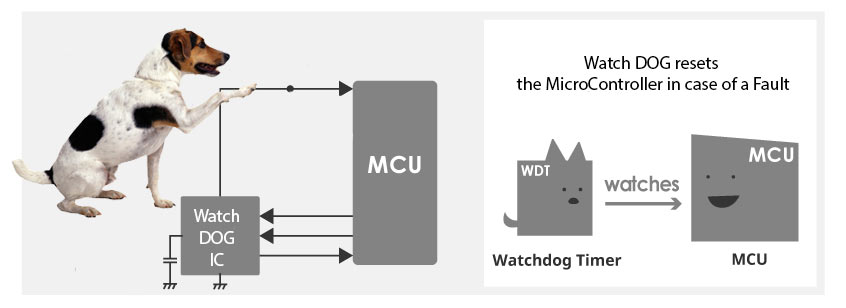
All Receivers and transmitters use microcontrollers ,which acts like the brain of the remote control system.
A watchdog IC is a component which resets the microcontroller ,if the microcontroller doesn't poll the watchdog IC within a
certain period of time. Typically this time ranges from a few milliseconds to 2 seconds.
Unfortunately, If the microcontroller hangs up during operation of a relay , and keeps the relay on without responding to
emergency signals, an accident can occur.
In such a condition ,an external watchdog IC will reset the microcontroller and
prevent an accident.
Environment where the Crane Radio will be used
There are 4 things to consider in Environmental conditions-
Physical Environment,Barriers,Metal Objects,Operation Hazards.
1) Will the Remote control be used an open environment or closed environment
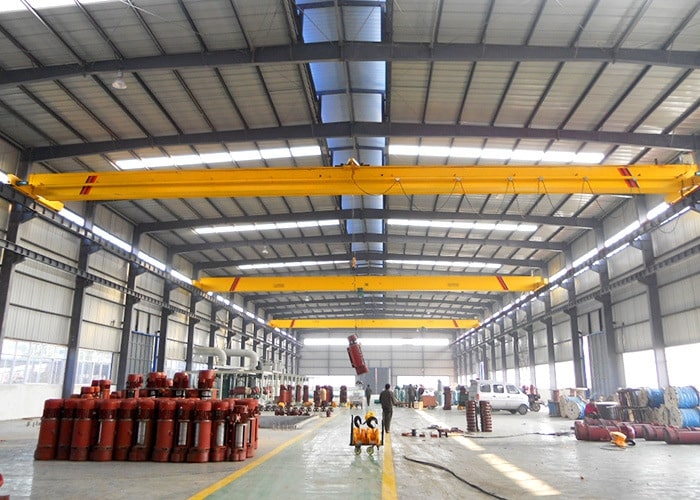
A Closed environment like a warehouse protects against the sun,wind and rain .
Different Radio remotes control manufacturers use different plastics and IP ratings for the transmitter and for the receiver
depending on the environmental conditions.
Using an IP 21 rated plastic enclosure for a receiver box in Rain is not the most
intelligent idea.So, select a remote control which matches the IP rating required.
2)Ambient Temperature Conditions.
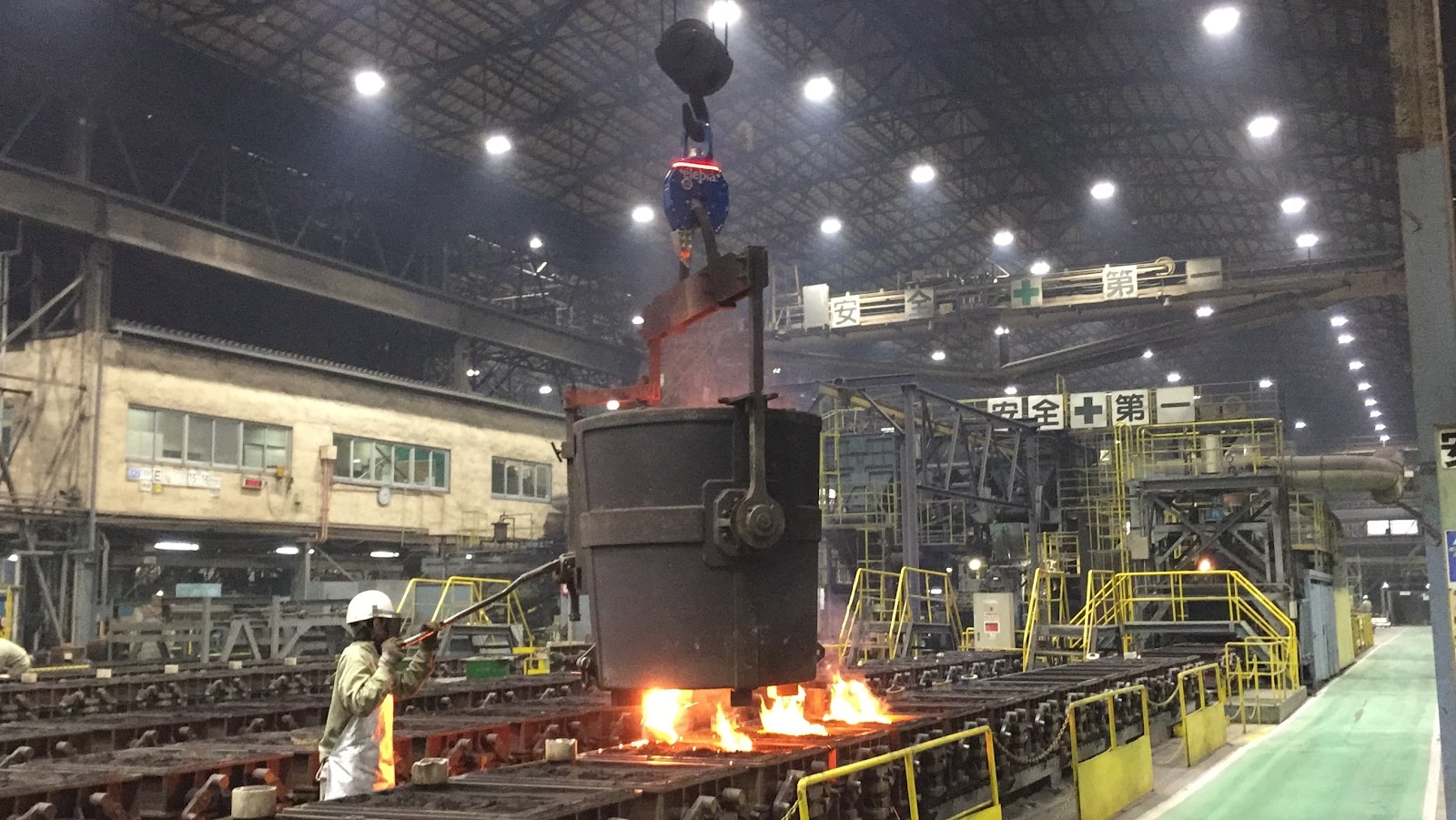
Is your radio remote control going to be used near a Steel furnace with higher ambient temperature?Selecting a remote control with a high temperature plastic enclosure will ensure a long life of the equipment.Does the remote control need to be certified according to ATEX Directive.
3)Obstructions of radio waves due to
metal objects,glass surfaces, walls.
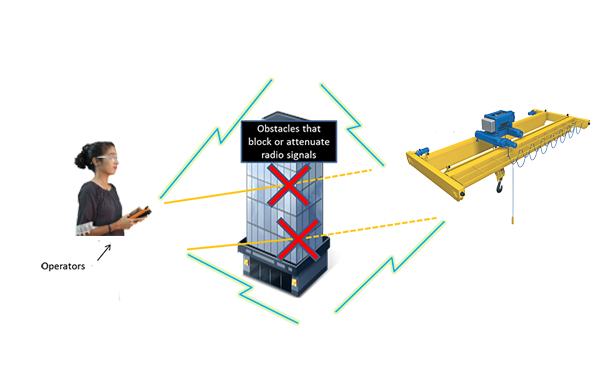
Such sources of interference will result in difficulties if the correct radio remote control is not selected for the particular environment.It is difficult for Radio waves to travel through metals and they suffer high attenuation losses.if the obstructions are large , a use of a signal repeater between the transmitter and receiver is a good option.
4) Operation Hazard.
The radio frequencies used by the radio system might not be legal in certain explosive environments. Or maybe use of radio frequecies is illegal in your workshop, in such a case ,try using a crane pendant instead.
Selection of Radio Remote control based on Ergonomics
things to consider: FormFactor,PushButton,Joystick,LCD,Toggle Switches,Antenna
1) Form Factor

You can select a push button type remote control with maximum of two speeds or a joystick type remote control with upto 5 speeds in each direction.Push button remotes are handheld portable form factor while the joystick type is a belly-box type form factor hanging from your neck or waist.
2) LCD option
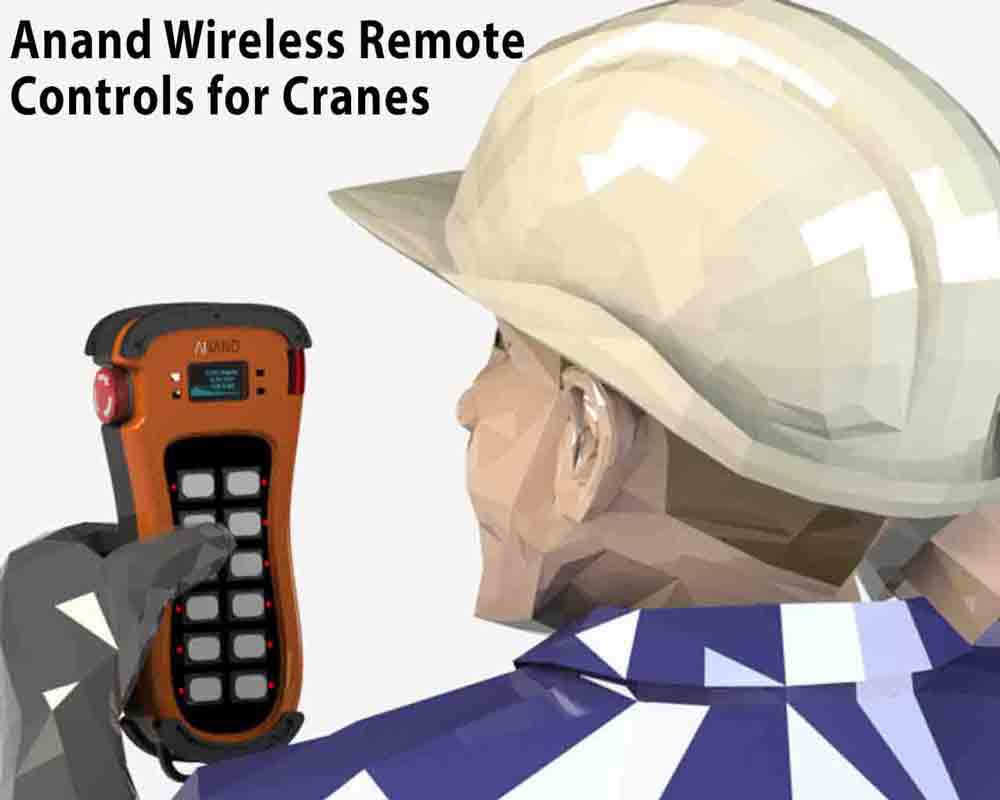
As mentioned in the feedback section, with the LCD you can view many operating parameters of your system.From Battery level, to weight of lift,Speed of Operation in the cross travel ,long travel and hoisting , etc.
3)Push Button,Toggle Switches or Analog Switches
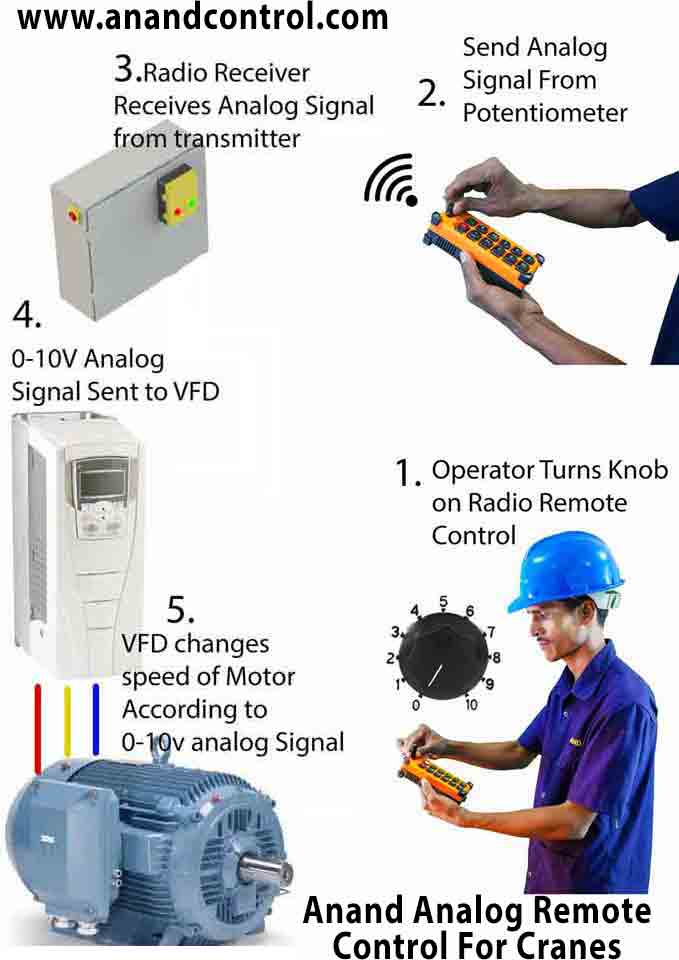
Toggle switches are not returned by a spring action but are used when you want to keep an operation on or off .Push Button switches are normally returned to off position with an internal spring. Analog Switches are used when you want to precisely control the speed or temperature of your machine with the help of a rotating knob, like the volume of your speakers.
There are various types of Push Button Remote Controls-
-
Two Button Push-Button
Two button Push button means there are only two buttons on the radio remote control, which will only transmit Start and Stop command to the operating crane. -
Four Button Push-Button
In Four button Push button there are four buttons in the remote which helps in operating the crane, they can only start, stop, Up and Down ,this are the switches for radio remote control. -
Six Button Push-Button
Six button Push button have six buttons in it Start, Stop, Up, Down, Left and right in the radio remote control. This helps the crane operator to use the function for the better directions. -
Eight Button Push-Button
Eight button Push button radio remote control consist of Start, Stop, Up, Down, Left, Right, Forward and Reverse buttons they are configured for operating the crane. -
Ten Button Push-Button
Ten Button Push Button Radio remote control comprises of Start, Stop, Up, Down, Left, Right, Forward, Reverse, Aux Up and Aux Down buttons configurations for controlling an cranes. -
Twelve Button Push-Button
Twelve Button Push Button radio remote control consist of Start, Stop, Up, Down, Left, Right, Forward, Reverse, Aux Up, Aux Down, Light On/Off and Spare buttons configured for operating the crane.
4)Internal Antenna or External
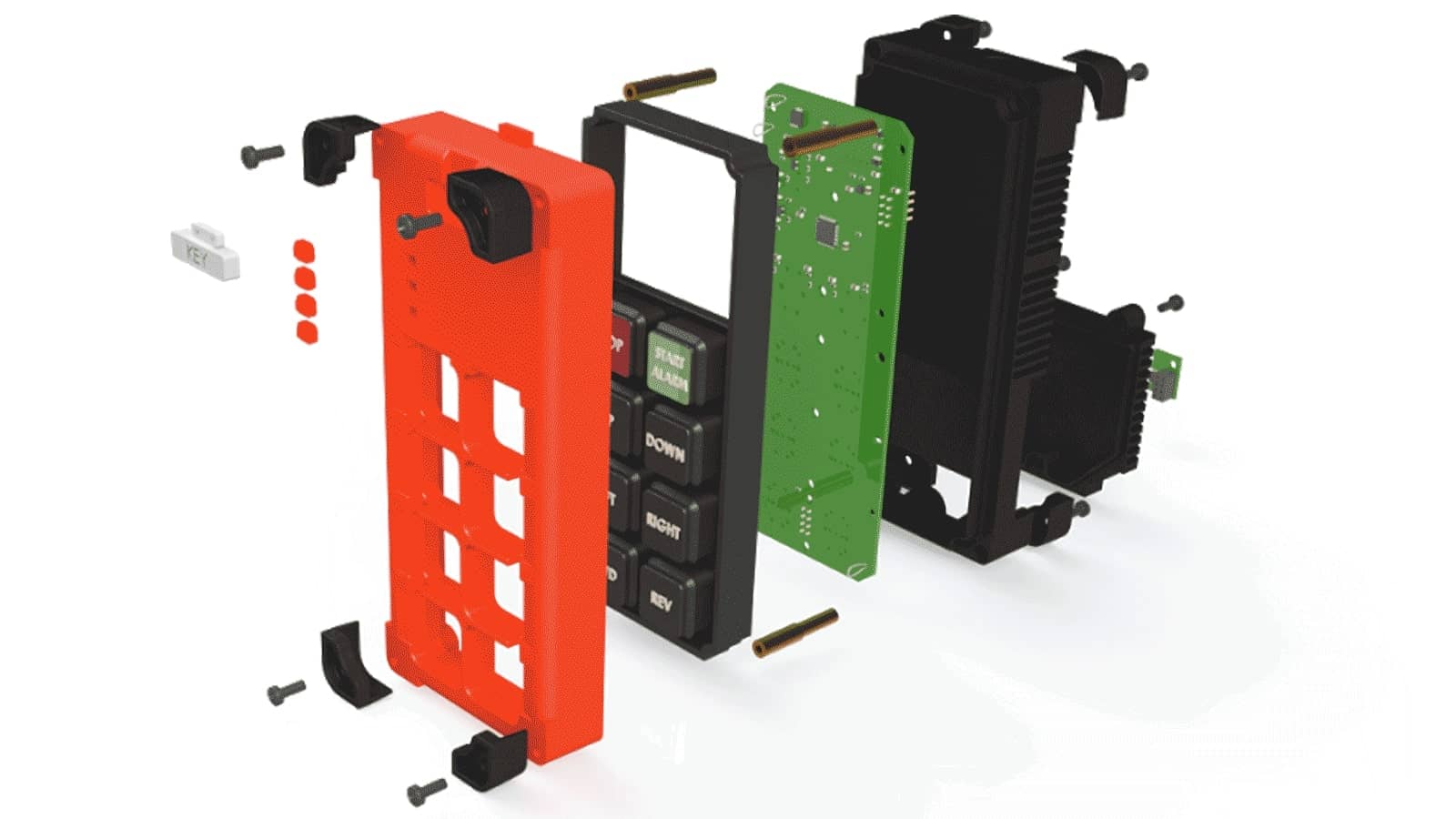
Many radio remotes come with Internal Antennas and External Antennas. According to our experience selecting Internal Antennas in the transmitter as well as receiver prevents the antenna from damage during a drop and during transportation.
4)Joystick Remote Controls
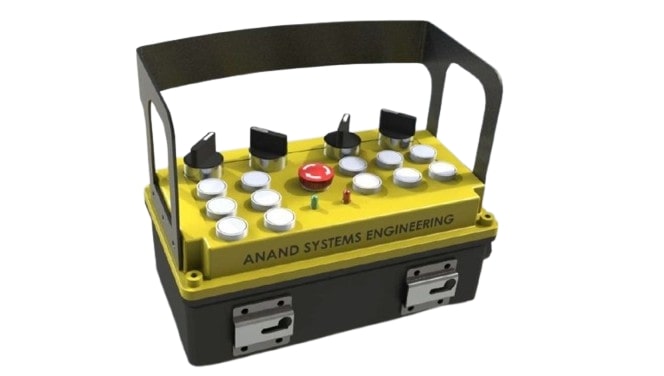
-
I. One Joystick with two function button
One Joystick will help the operator to move the crane to take Left, Right, Forward and backward in the radio remote. The two function buttons are Start and Stop the crane.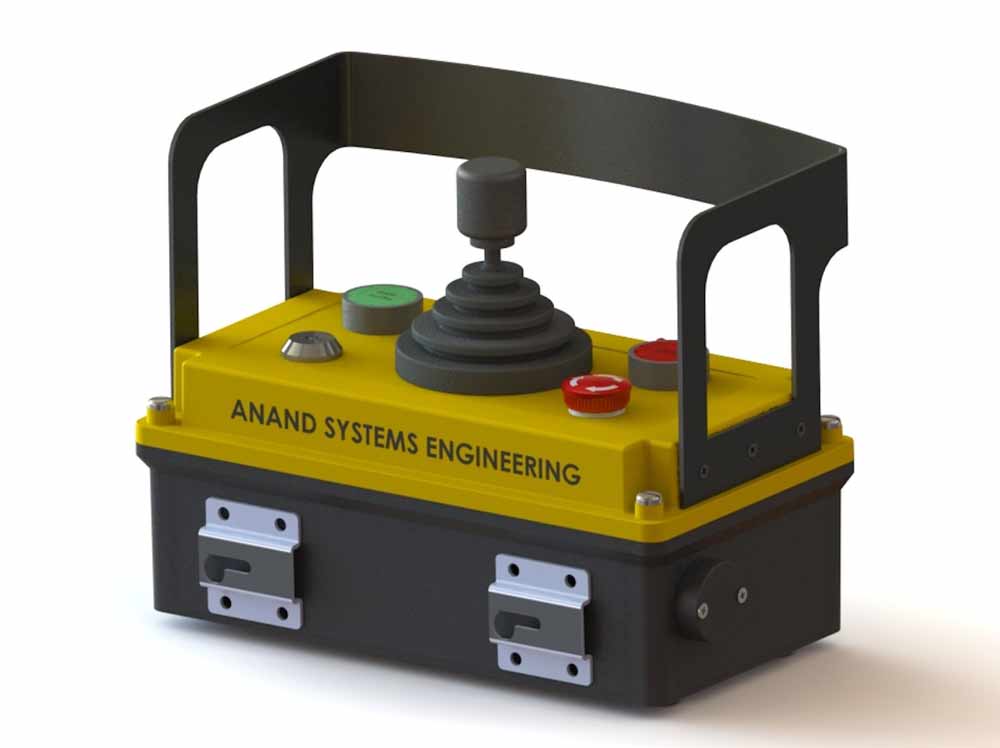
-
II. Two Joystick with two function button
Two Joystick will help the operator to move the crane, One Joystick will take Left, Right, Forward backward and the other Joystick will take Up and Down in the radio remote. The two function buttons are Start and Stop the crane.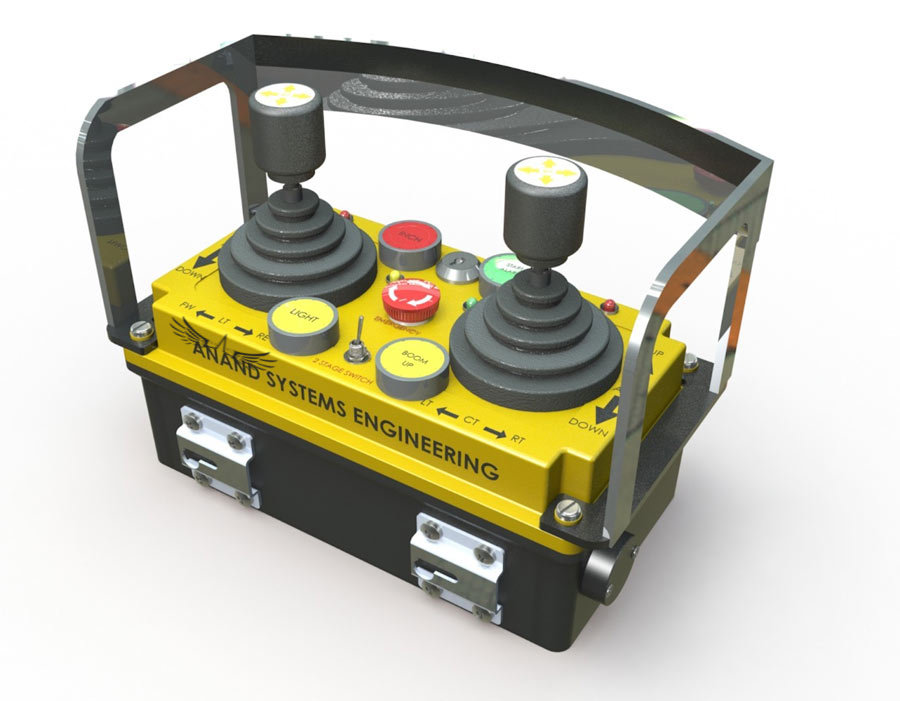
-
III. Three Joystick with two function button
Three Joystick will help the operator to move the crane, One Joystick will take Left and Right, Second Joystick will take forward and backward, last one will take Up and Down in the radio remote. The two function buttons are to Start and Stop the crane. -
IV. Four Joystick with two function button
Four Joystick will help the operator to move the crane, One Joystick will take Left and Right, Second Joystick will take forward and backward, last one will take Up and Down in the radio remote. The two function buttons are to Start and Stop the crane.
Integration of Remote control with the Crane Control Panel.
1) Receiver Indication Lights
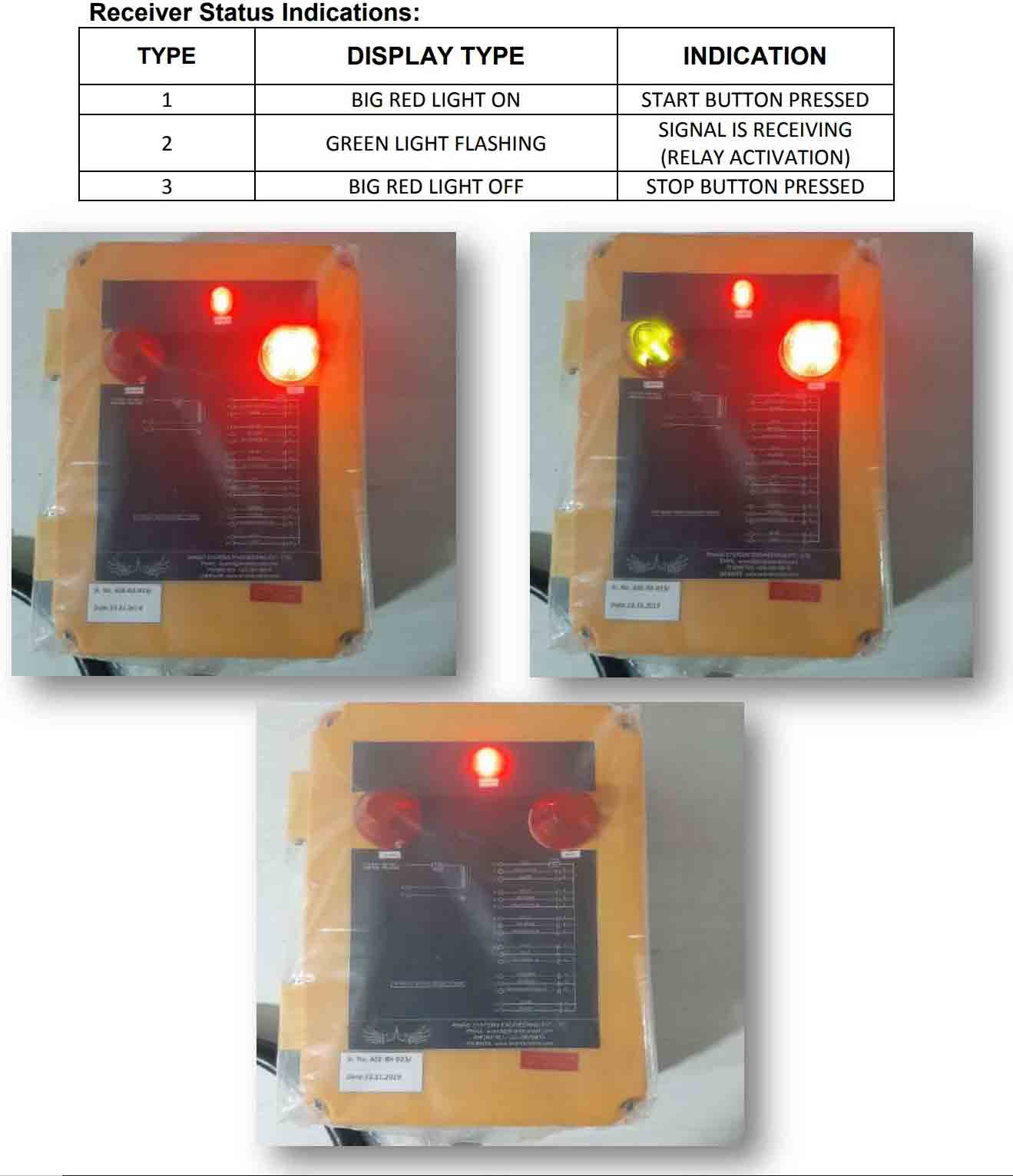
Indication lights on the receiver visually indicate to everyone on the workshop if the receiver has power and / or the main line contactor is Switched On
2) Wiring Diagram of the Remote Control.
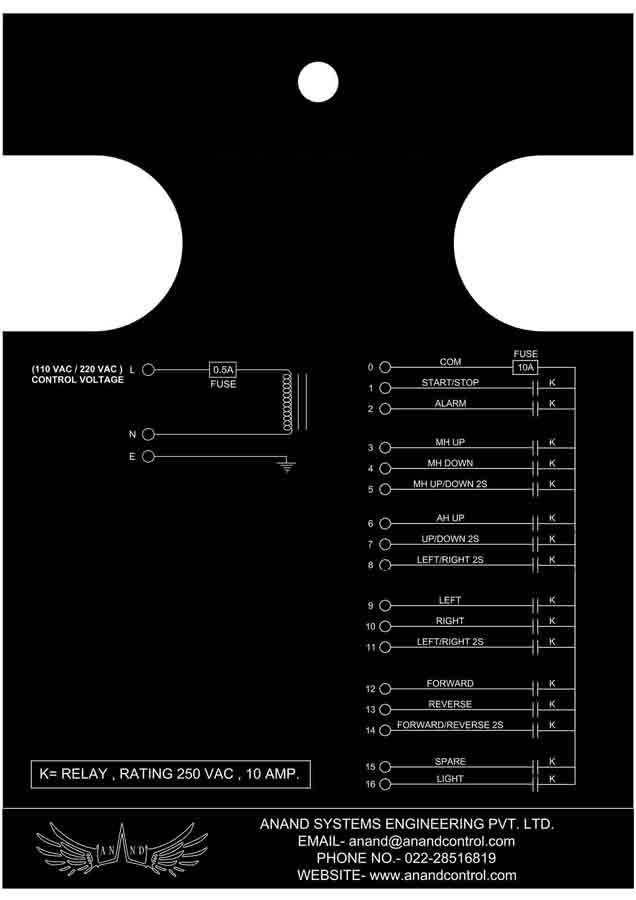
Integration of the Remote control with a Control panel should be an easy task as
Control panels are installed on the crane with limited space and higher than usual ambient temperature.
It is also not easy
to climb up to the crane , so to make installation easy , a very well detailed wiring diagram needs to be provided and
glued on top of the receiver box for easy visibility.
The electrician can then look at the wiring diagram , locate the
wires with the ferrule numbers given in the wiring diagram and connect the wires to the control panel.
Ferrules on the wires need to be large and visible as visibility is also reduced on top of the crane in a workshop.
Service & Support - Service ,Team, Spares,Online support.

Last but not the least : A prompt and always available Service & Support team is vital.Since, Radio remote controls are industrial products , product malfunction or downtime means loss of productivity and lost revenue.An easy to read and interpret user manual along with the system also goes a long way .
Cost of a Crane Radio remote Control
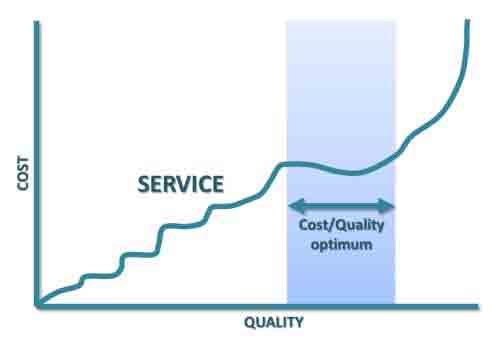
Finally, selecting the cheapest remote control , which is satisfying all of your
above requirements will be better than just selecting the cheapest one. Once you are aware of the parameters in selecting
a remote control system you will make a better decision.
Cheers!
Anand Systems Engineering is an Indian manufacturer of Radio Remote Control systems for Cranes and Hoists with a Goal of modernizing Indian Engineering.
Follow us on YouTube.